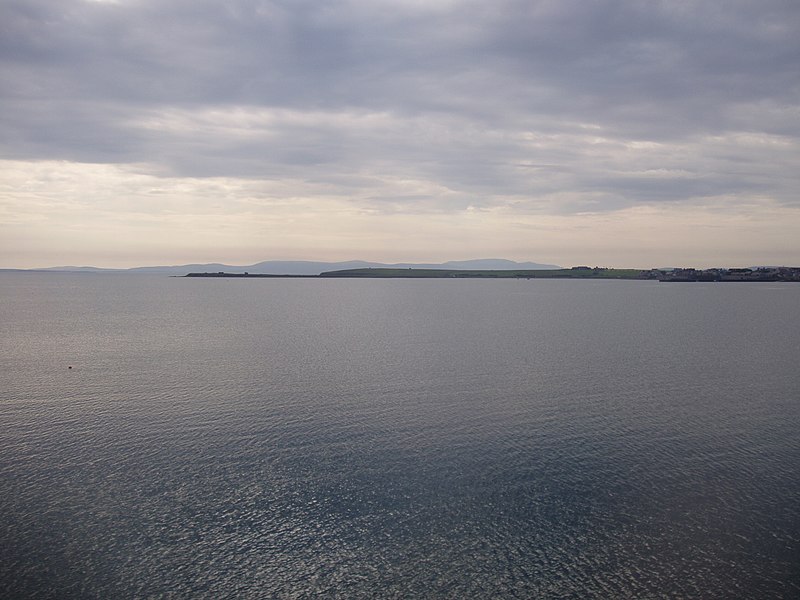.
In our town, people live in rows.
The only irregular thing in a street is the steeple;
And where that points to, God only knows,
And not the poor disciplined people!
And I have watched the women growing old,
Passionate about pins, and pence, and soap,
Till the heart within my wedded breast grew cold,
And I lost hope.
But a young soldier came to our town,
He spoke his mind most candidly.
He asked me quickly to lie down,
And that was very good for me.
For though I gave him no embrace --
Remembering my duty --
He altered the expression of my face,
And gave me back my beauty.

The Fired Pot: Anna Wickham, from The Man with a Hammer, 1916
Broken shard of WW I era British Naval pottery, retrieved from Scapa Flow, Orkney: photo by Richard Harvey, 2003
View of Scapa Flow from atop Churchill Barrier #1, between Lamb Holm Island and mainland Orkney Island: photo by Gregory J. Kingsley, 2009




6 comments:
Tom,
What a little treasure this pot it. And what a reflection of sky in water / water in sky there on Orkney Island. There must be a story behind all this. . . .
Steve,
Two stories. Both, like most historical stories, involving a certain amount of speculation and interpretation.
First the story of Anna Wickham. One can't know this story very clearly, as it would be the story of her private marital and emotional difficulties. Her husband, she said later in her autobiography, did not approve of her writing poetry. She spent some time in a mental hospital, and was discreetly referred to as an "eccentric". But of course almost every poet has been so spoken of, at one time or another.
The other story behind the post is the story or stories about Scapa Flow, in the Orkney Islands, one of the great natural harbours and anchorages in the world.
The British fleet was based there during the two great World Wars of the last century.
At the end of the first War, the German fleet was interned and sunk there. There are consequently a great deal of German naval pottery shards that have been fished up.
But the bit of Royal Navy pottery pictured in this post probably has a different history. My guess is that it is of World War I vintage and was in use from that time until 1939. My speculation is that the mug of which we see a remnant was in use on the HMS Royal Oak. On 14 October 1939 the German submarine U-47 penetrated Scapa Flow and sank the Royal Oak. 833 men were lost. I am guessing some of them may have drunk from this ceramic mug.
Tom,
Thanks for this, quite amazing! Both AW and Scapa Flow new(s) to me. That little pot is a treasure, so restrained and deep, the line of the flow on horizon between sea and sky (beneath which a whole German fleet still lies . . . . (!)
Steve, as to the found specimen of pottery:
A treasure of a sort, yes, for thinking upon as well as seeing: those chance inscriptions of accidental sub-marine "history" not yet effacing the visible symbol of a "cause" behind the use of the utensil: I found that made for interesting reflection.
(Also I surrender my spirit all too readily to certain shades of violet and blue.)
And as to that wide horizonal gateway toward Norway, in the lower image, with all those bones of men and ships below, an opening to further fathomings, indeed...
Tom,
". . . that wide horizontal gateway toward Norway. . ." -- sounds altogether mysterious. "The undiscovered country from whose bourn/ No traveler returns." Here sun up behind the branches, "cormorants flapping toward point" ---
4.1
first grey light in sky above still black
ridge, white circle of moon above branch
in foreground, sound of wave in channel
“a way of seeing” something,
here that thing that
system, multiple scenes set
with scale, constant
sunlit white clouds above shadowed ridge,
line of cormorants flapping toward point
“a way of seeing” something,
here
Good morning, Steve.
A's early morning weather report from around the block:
"Chilly, wet leaves on the pavement... it's trying to clear up".
Post a Comment